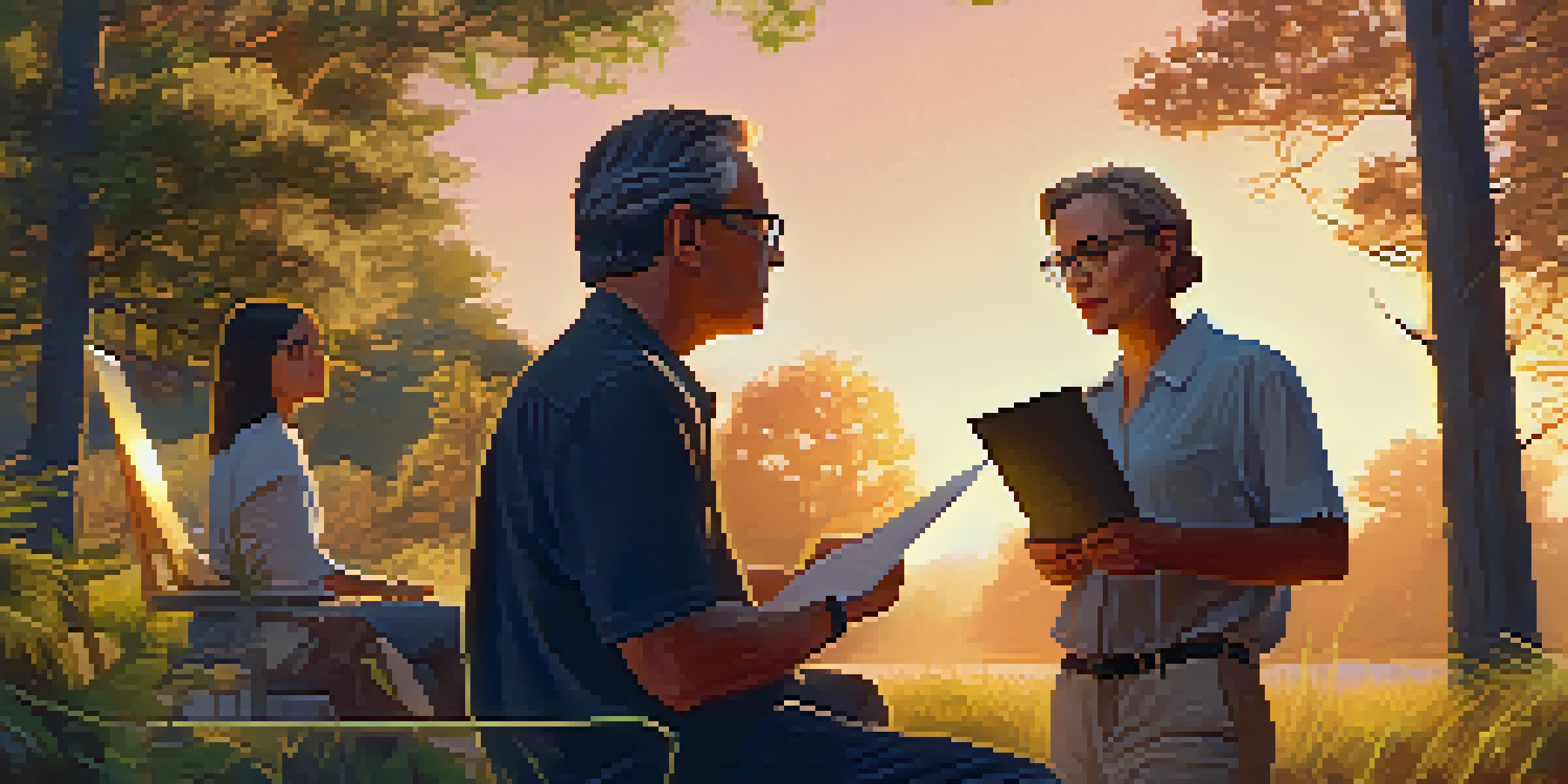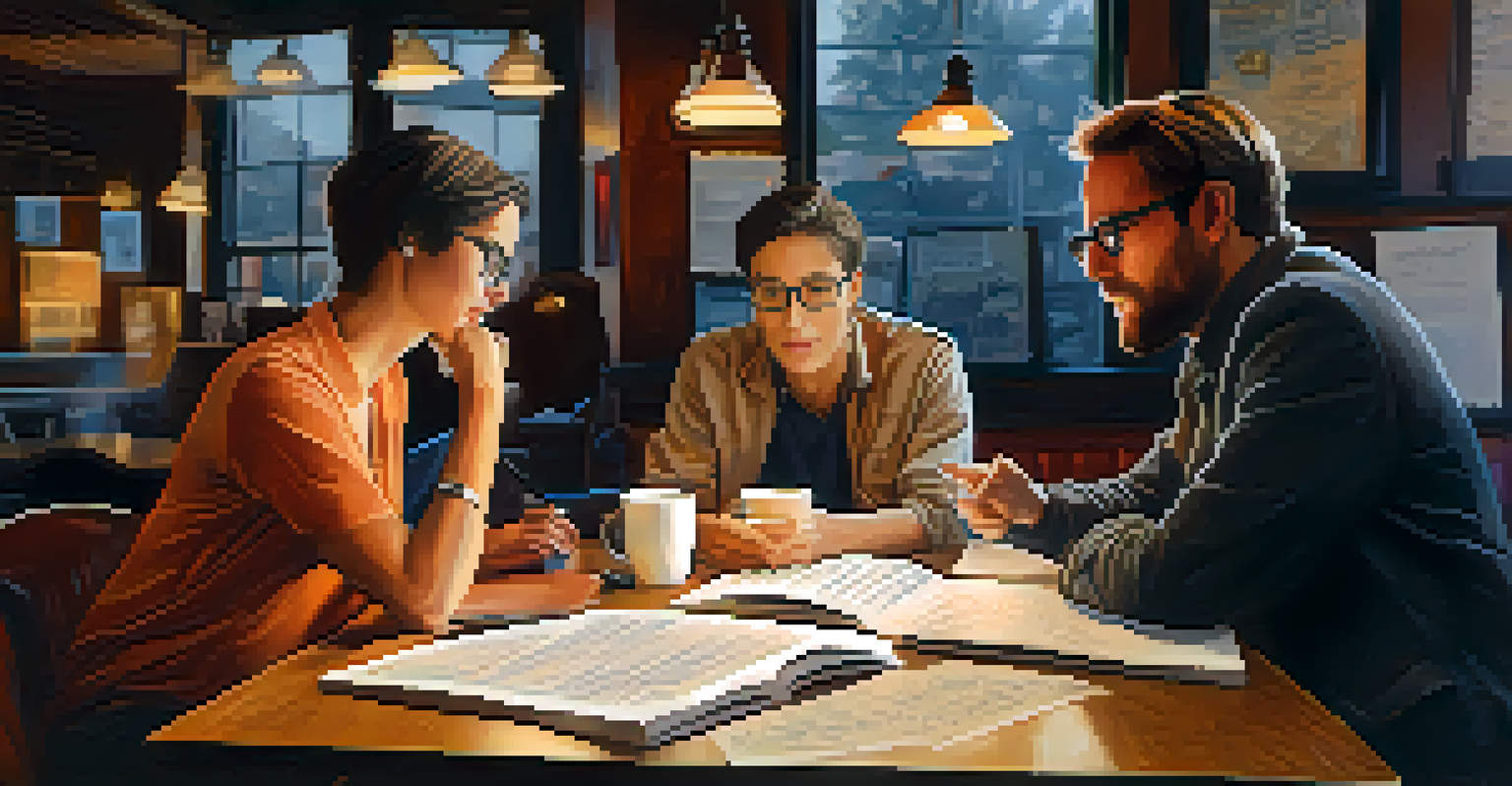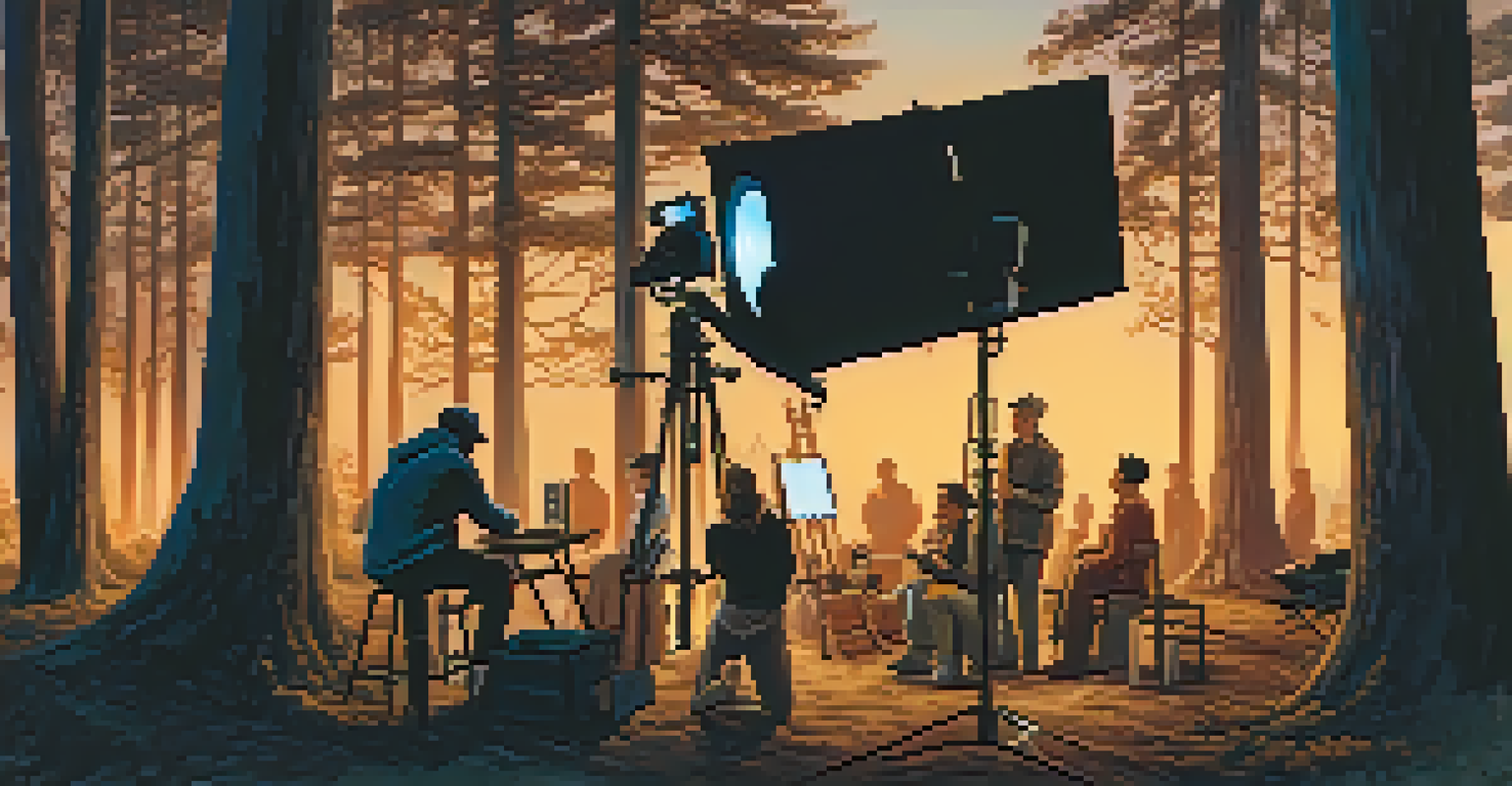The Collaborative Relationship Between Directors and Writers

Understanding the Roles of Directors and Writers
In the world of filmmaking, directors and writers play distinct yet complementary roles. The writer is responsible for crafting the story, developing characters, and creating dialogue that resonates with audiences. Meanwhile, the director translates this written vision into visual art, guiding actors and shaping the film's overall tone and style.
A film is a very complicated thing. It's like a big machine, and every cog has to work perfectly for the whole thing to function.
This relationship is crucial because a well-written script needs a director who can bring it to life through performance and cinematography. Think of the writer as the architect who designs a blueprint, while the director is the builder who constructs the house. Both are essential for the final product to be a success.
To illustrate, consider the collaboration between acclaimed writer Quentin Tarantino and director Martin Scorsese. Each brings their unique vision to the table, resulting in films that are both critically acclaimed and commercially successful.
The Importance of Communication in Collaboration
At the heart of any successful collaboration is effective communication. Directors and writers must share their ideas openly and honestly to ensure that their visions align. Regular meetings and brainstorming sessions can foster a creative environment where both parties feel valued and heard.

Consider a scenario where a writer presents a powerful scene, but the director envisions a different approach. By discussing their perspectives, they can either find common ground or create a new direction that enhances the story. This back-and-forth can lead to unexpected breakthroughs that elevate the film.
Directors and Writers: A Teamwork Duo
Directors and writers collaborate closely, with writers crafting the story and directors translating it into visual art.
Ultimately, strong communication builds trust, which is paramount in a creative relationship. When both the director and writer feel comfortable sharing their thoughts, they can push each other to take risks and explore new creative avenues.
Balancing Creative Input: Who Takes the Lead?
A common question in the film industry is who holds the reins in the creative process—the writer or the director? While it often depends on the individual project, a balanced approach tends to yield the best results. Writers should feel empowered to advocate for their vision, while directors must remain open to the writer's insights.
The writer and director are like two sides of a coin. You need both to create a great film.
Imagine a symphony where each musician plays a part, but the conductor ensures they harmonize. In this way, the director conducts the overall vision, while the writer provides the score. This balance allows for creativity to flourish without overshadowing either role.
In practice, some directors prefer to stick closely to the script, while others may encourage improvisation. This dynamic can lead to a richer film if navigated thoughtfully, ensuring that both perspectives are acknowledged and valued.
Adapting Scripts: The Writer's Flexibility
As production progresses, changes to the script are often necessary. Directors may request adjustments based on casting, location, or pacing, and writers must be flexible to accommodate these shifts. This adaptability is vital, as it allows the story to evolve and respond to the realities of filmmaking.
For example, during the filming of 'The Shawshank Redemption,' director Frank Darabont collaborated closely with Stephen King, the original writer. They made several adjustments to the script based on what worked best visually and dramatically, showcasing the importance of adaptation.
Communication Fuels Creative Success
Effective communication between directors and writers builds trust and fosters innovative ideas that enhance the film.
Writers who embrace this flexibility not only enhance their collaboration with directors but also improve the overall quality of the film. The ability to pivot while staying true to the core message of the story fosters a stronger end product.
The Influence of Genre on Collaboration Dynamics
The genre of a film often shapes the collaboration between directors and writers. For instance, in a comedy, the writer might focus heavily on punchy dialogue, while the director emphasizes timing and delivery. Conversely, in a drama, the emotional depth and character development might take precedence.
This genre-specific focus can dictate the nature of their discussions, with each party bringing unique insights to the table. For example, a horror film might see the writer crafting suspenseful twists, while the director might concentrate on visual scares, leading to a rich dialogue about how to best achieve audience engagement.
Understanding these genre nuances helps both writers and directors to play to their strengths, ensuring that each film resonates with its intended audience. It’s like a dance, where each partner must adjust their steps based on the rhythm of the music.
Case Studies: Successful Director-Writer Collaborations
Looking at successful collaborations can provide valuable insights into the director-writer dynamic. Take the partnership of Christopher Nolan and Jonathan Nolan, for example. Their collaborative efforts have resulted in iconic films, such as 'Inception' and 'Interstellar,' showcasing how their combined strengths create compelling narratives.
Another notable example is the work of the Cohen brothers, who often write and direct their films. Their seamless collaboration has led to a unique storytelling style that blends dark humor with deep themes, proving that a strong partnership can yield remarkable results.
Adaptability is Key in Filmmaking
Writers must be flexible in adapting scripts during production to ensure the story evolves with the filmmaking process.
These case studies highlight that successful collaborations often stem from mutual respect and a shared vision. When directors and writers work together harmoniously, they can create cinematic experiences that resonate deeply with audiences.
The Future of Director-Writer Collaborations in Film
As the film industry evolves, the collaboration between directors and writers will continue to adapt. With the rise of streaming platforms and changing audience preferences, new storytelling formats are emerging. This landscape presents exciting opportunities for innovative partnerships that push the boundaries of traditional filmmaking.
For instance, the integration of virtual reality and interactive storytelling is prompting directors and writers to explore new ways to engage audiences. These advancements require a deeper level of collaboration, as both parties must navigate uncharted creative territory together.

Ultimately, the future of director-writer collaborations looks promising, filled with potential for groundbreaking narratives. By embracing change and fostering strong partnerships, filmmakers can continue to captivate audiences in new and exciting ways.